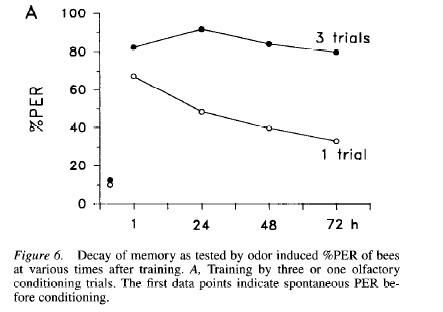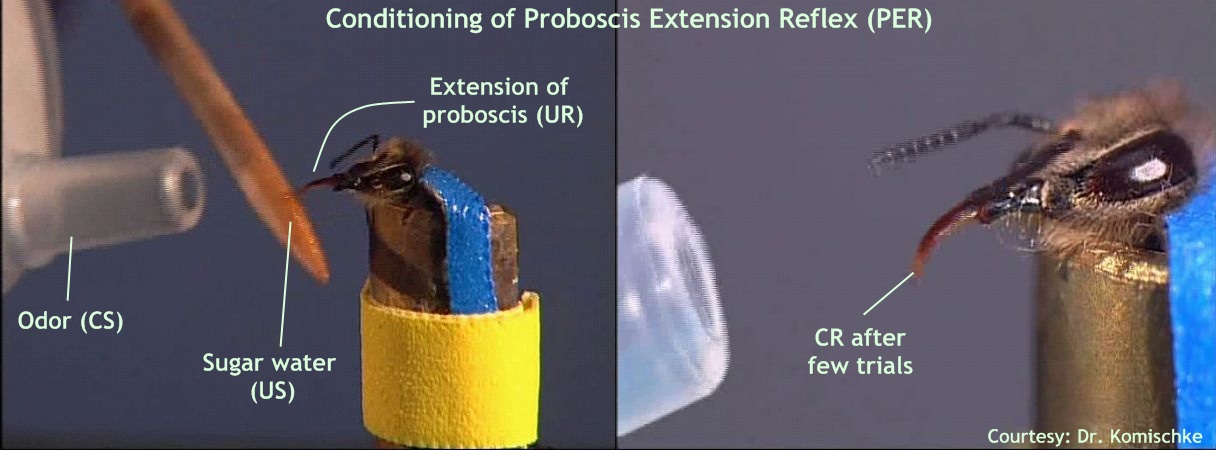Bombs Away! Homeland Security "Buzzes" with Bee Learning
Biology 342 Fall 2012
by Matthew Keeslar and Alexandra Bryn Mariani
Mechanism
The bee brain has less than a million neurons (Witthoft 1969) and yet can navigate long distances, learn complex topography, and distinguish a vast wealth of olfactory cues. Bees accomplish these tasks with two large compound eyes and with the 60,000 olfactory receptors in located in their antennae (Vareschi 1971). Although bee eyes have low acuity, they are optimized for fast, in-flight maneuvers and can detect UV radiation as well as polarized light. The ability to see polarized light and UV raditaion enables bees to recognize patterns on flowers that reflect UV light (Rossel and Wehner 1993). The scent of a particular flower also coaxes a bee back to its corresponding food source.
Memory
- Bees can learn a smell from a dancing bee in the hive
- Once they know an odor, they will find that flower later
- One trial-induced memory in a bee will last for days
- A few additional trials will cause the memory to last for a lifetime (Hammer and Menzel 1995)
PER
- Bees have a reflex to extend their proboscis in the presence of sucrose
- This reflex is called the proboscis extension reflex (PER)
- Bees conditioned to associate a certain odor with the presence of sucrose will continue to extend their proboscis when they smell the odor even without the presence of sucrose. (Hammer and Menzel 1995)
- Additionally, bees will associate smells with not only nectar and sugar, but also pollen (which is interesting because pollen is a less immediate reward than sugars). (Arenas and Farina 2012)
PER could possibly be a fixed action pattern related to feeding behavior, because this reflex can reduce foraging time. It is used as a way to measure a bee's memory; a bee with a good memory will exhibit PER whenever it remembers an odor, and a bee with a bad memory will not.
 |
Stingless BeesWhile most research in this area has been done with the honeybee, there have also been studies that observe similar behavior in the stingless bee. (Mc Cabe and Farina 2010) Stingless bees
|
Bees Prioritize Their Own Experience
Even more amazingly, sometimes a given bee will rely more on its own memories of food outside of the hive, rather than paying attention to new smells and other information circulating about the hive. (Mc Cabe and Farina 2010) However, stingless bees still will successfully recruit other bees to return to a food source with them. These recruited bees do in fact show a preference toward familiar (the smell on the recruiter bee) versus unfamiliar smells. (Reichle, Jarau et al. 2010) Interestingly, bees were shown to better distinguish two odors in the dark. (Lehmann, Gustav et al. 2011) However, this makes sense due to the fact that bees are likeliest to learn scents from other bees while in the hive, which is dark.